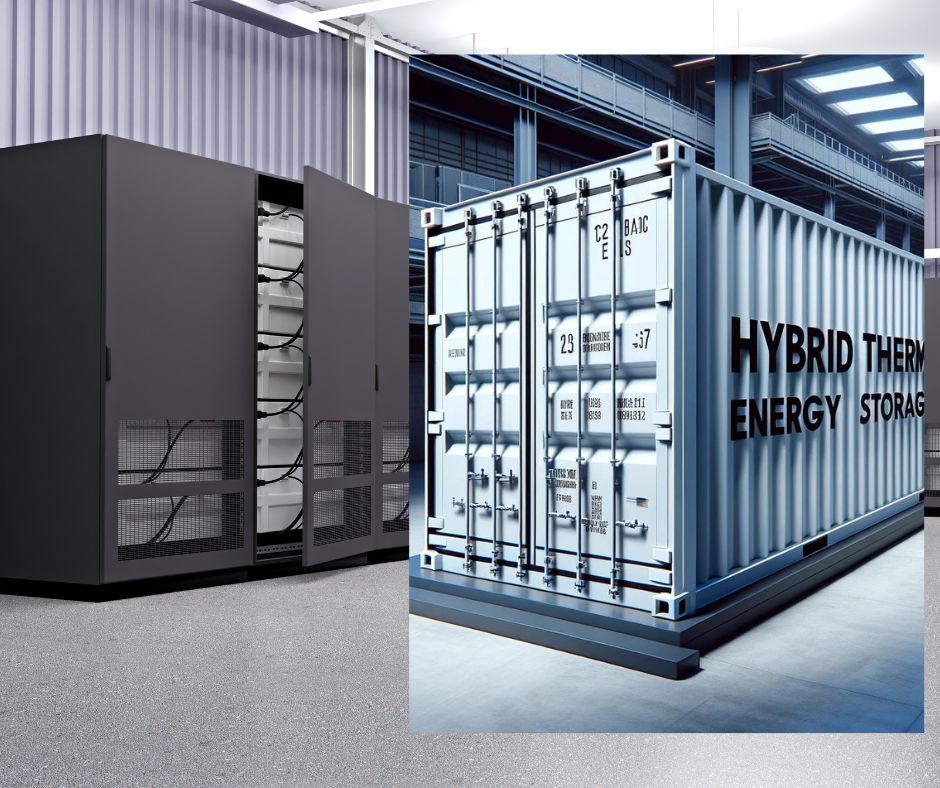In the quest for sustainable energy solutions, the conversation often circles how to store energy efficiently and eco-consciously. Traditional batteries, for decades, have been the go-to for energy storage, powering everything from small household gadgets to large-scale power grids. However, the environmental footprint and lifecycle limitations of batteries are increasingly becoming a concern. Enter the Hybrid Thermal Energy Storage System (HTESS), equipped with its patented phase material, a groundbreaking advancement poised to redefine energy storage standards. Let’s explore the transformative benefits of HTESS and why it stands as a superior alternative to conventional batteries.
The Environmental Toll of Traditional Batteries
Traditional batteries, including lithium-ion variants, come with a significant environmental cost. The extraction of raw materials such as lithium, cobalt, and nickel requires extensive mining operations, which have profound impacts on ecosystems and local communities. Furthermore, the toxic nature of these batteries during disposal poses serious environmental hazards. As batteries degrade over time, they release harmful chemicals into the environment, contributing to pollution and health risks. Additionally, the finite lifespan of batteries necessitates frequent replacements, exacerbating the cycle of resource extraction, use, and waste.
HTESS: A Leap Towards True Sustainability
The Hybrid Thermal Energy Storage System (HTESS) offers a compelling solution to the challenges posed by traditional batteries. At its core, HTESS utilizes a patented phase change material (PCM) that absorbs and stores energy in the form of heat. This innovative approach to energy storage is not only highly efficient but also environmentally benign.
Why HTESS Outshines Traditional Batteries:
- Zero Toxicity: Unlike conventional batteries that contain hazardous chemicals, the HTESS system operates on a completely non-toxic, phase-change material. This eradicates the risk of environmental contamination through leakage or disposal, making HTESS an inherently safer option for our planet.
- Durability and Longevity: The phase material in HTESS is designed for endurance. It does not degrade over time like chemical batteries, which suffer from diminishing capacity with each charge cycle. This means HTESS can offer consistent performance over a much longer lifespan, significantly reducing the need for replacements and the associated environmental impact.
- Carbon Neutrality: Perhaps the most compelling advantage of the HTESS is its true carbon neutrality. The system’s ability to store and release thermal energy without reliance on fossil fuels or generating carbon emissions positions HTESS as a genuinely green technology. In contrast, the production and disposal of traditional batteries generate considerable carbon footprints, despite their role in supporting renewable energy applications.
- Versatility and Scalability: HTESS is not just environmentally friendly; it’s also incredibly versatile. The system can be scaled to meet various energy storage needs, from small residential setups to large-scale industrial applications. This flexibility, combined with its environmental credentials, makes HTESS an ideal choice for a wide range of energy storage requirements.
As we navigate the complexities of creating a sustainable energy future, the Hybrid Thermal Energy Storage System (HTESS) emerges as a clear frontrunner. By addressing the environmental drawbacks of traditional batteries and offering a robust, efficient, and genuinely green alternative, HTESS is poised to play a pivotal role in the transition to sustainable energy storage. For those committed to environmental stewardship and innovation, the choice is clear: HTESS represents not just a step, but a leap towards a cleaner, greener future.
For further insights and developments on sustainable energy solutions, keep following us.

Copywrite Howler Media Holdings, LLC 2024

